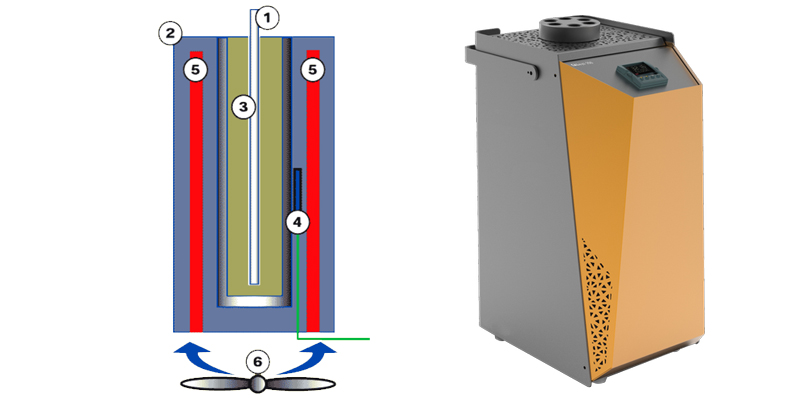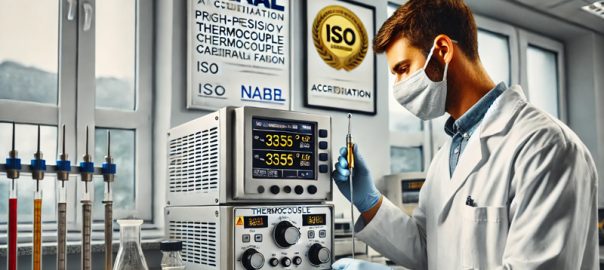
Picture:
- Sensor-under-test
- Solid metal block (dry block)
- Interchangeable inserts for the sensor-under-test
- Internal RTD reference sensor
- Heating elements
- Cooling fan
A temperature calibration bath provides precise temperatures for more calibration of RTD, Thermocouples, PRTs, SPRTs, and liquid in glass (LIG) thermometers.
The principle of a dry block temperature calibrator bath is basically very simple:
Heating up a metal block and keeping the temperature stable.
Temperature calibration bath used for themocouple/RTD testing & calibration purpose. Basically the calibration bath contains some type of heating elements which are used to raise the bath temperature. For Maintaining the Temperature, we need a internal temperature sensor like RTD, so we can control the bath temperature with a simple inbuilt PID controller. The setpoints of the calibration bath will be given by the operator/user using front end knobs. The Device under test i.e. Temperature sensor which is to be calibrated will be placed inside the temperature bath. The bath maintains the temperature as per the user settings or requirements.
If we place RTD inside the temperature calibration bath, then maintain fixed temperature say 100 Deg C and note down the Resistance value of RTD. Again increase the temperature say 120 Deg C and note down the resistance value of RTD and repeat the same for three more different temperatures. Also we will check from increasing to decreasing order. Finally cross check the noted resistance values with standard Resistance Vs Temperature chart and note down the differences of actual and standard readings to find out the drift or error values.
The procedure will be same for thermocouple also, but here we measure mV and check with Temperature Vs mV chart for that specific thermocouple type. Note : Thermocouple chart will be different for each type of thermocouple.
This basic design gives the user a lot of advantages compared to the more traditional liquid baths.
- Heating up and cooling down much faster
- Much wider temperature ranges
- Physically smaller and lighter
- Designed for industrial applications
- Models with completely integrated calibration solutions












